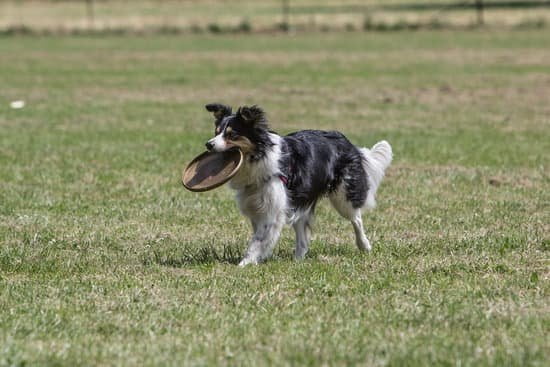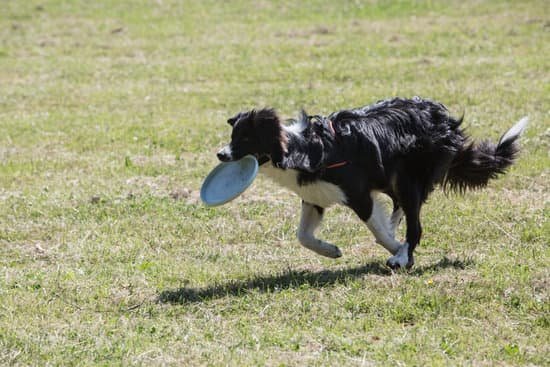When it comes to owning a dog, training is crucial for their well-being and the overall safety of those around them. One aspect of training that often goes overlooked is teaching your furry friend how to behave appropriately around strangers. In this article, we will explore the importance of training your dog with strangers, the challenges and benefits involved in building positive interactions, and provide tips and techniques to help you successfully train your dog to navigate these encounters.
Interacting with strangers is an inevitable part of everyday life for both humans and dogs alike. Whether you’re taking your beloved pet on a stroll through the neighborhood or hosting guests at home, it’s essential that they can respond calmly and politely in these situations. Not only does responsible dog training promote good canine citizenship, but it also ensures the safety of everyone involved.
However, training your dog to behave properly around strangers can present its own set of challenges. Fearful or aggressive behavior towards unfamiliar individuals can create stress and tension for both you and your four-legged companion. On the other hand, building positive interactions between your dog and strangers brings a wide range of benefits, such as increased socialization skills for your pet and more harmonious relationships within your community.
By understanding why this type of training is important, addressing various challenges that may arise along the way, and implementing effective techniques, you can create a firm foundation for success in shaping your dog’s behavior with strangers.
So let’s dive into the fundamentals of socialization, building trust between your dog and unfamiliar faces, introducing basic obedience commands, overcoming fear and anxiety, teaching polite greetings, creating realistic training scenarios, troubleshooting common challenges, celebrating progress made during the training process, and ultimately continuing on the path towards a well-trained canine companion who effortlessly navigates interactions with strangers.
The Fundamentals of Socialization
Socialization plays a crucial role in helping your dog feel comfortable and confident around strangers. By exposing them to new people in a controlled and positive manner, you can prevent fear or aggression towards unfamiliar individuals. To set your dog up for success, it is important to start socializing them early, ideally during their critical socialization period, which typically occurs between 3 and 14 weeks of age.
During the critical socialization period, puppies are more open and receptive to new experiences, making it an ideal time to introduce them to different environments, sounds, smells, and most importantly, people. When introducing your puppy to strangers, it is important to create a positive association by pairing the presence of new people with rewards such as treats and praise. This will help your puppy associate strangers with positive experiences and increase their comfort level.
In addition to controlled introductions, it is also beneficial to expose your dog to various situations that they may encounter in their daily lives. This includes walks in busy parks or streets where they can encounter different individuals or taking them on outings where they can interact with a diverse range of people. By gradually expanding their comfort zone and exposing them to different environments, you are setting the foundation for a well-socialized dog.
| Benefits of early socialization | Tips for introducing your dog to strangers |
|---|---|
| – Helps prevent fear or aggression towards strangers | – Start with familiar friends or family members |
| – Builds confidence in your dog | – Use positive reinforcement such as treats and praise |
| – Allows for easier handling by veterinarians or groomers | – Gradually expose your dog to different people and environments |
| – Reduces the risk of behavioral problems | – Make socialization a positive and enjoyable experience |
Building Trust
When it comes to training your dog to interact with strangers, building trust is essential. Establishing a strong foundation of trust between your dog and unfamiliar individuals can help ensure positive encounters and promote overall safety. Trust allows your dog to feel more comfortable and confident in new situations, reducing the likelihood of fear-based reactions or aggressive behaviors. Here are some effective training techniques and exercises you can use to build trust and confidence in your dog.
One of the most important ways to build trust with strangers is through positive reinforcement. Reward-based training methods strengthen the bond between you, your dog, and unfamiliar individuals. Start by associating strangers’ presence with something pleasant for your dog, such as treats or praise. Each time your dog encounters someone new, reward them for calm behavior and gradually increase their exposure to different people over time. This helps your dog create positive associations with strangers.
Another effective technique is desensitization and counterconditioning. This involves gradually exposing your dog to increasingly challenging situations involving strangers while providing rewards or pleasant experiences at each step. For example, if your dog is fearful around strangers, start by introducing them to individuals from a distance where they remain calm and relaxed, then progress towards closer interactions as they become more comfortable. Remember to always go at a pace that suits your dog’s needs and comfort level.
In addition to training exercises focused on trust-building, it’s essential to provide consistent socialization opportunities for your dog in various environments and situations. Exposing them to different people, places, sounds, and smells will help them become more adaptable and confident when encountering strangers. Consider taking them on walks in busy areas or attending obedience classes where they can interact with friendly people under controlled circumstances.
Building trust between your dog and strangers takes time, patience, and effort on both sides. By using positive reinforcement techniques like rewards-based training and slowly exposing them to new experiences, you can help your dog embrace encounters with unfamiliar individuals.
Remember that each dog is unique, so it’s important to tailor your approach to suit their temperament and specific needs. Ultimately, establishing a strong foundation of trust will contribute to your dog’s overall happiness and ensure more positive interactions with strangers in the future.
Introduction to Basic Commands
When it comes to training your dog with strangers, one of the fundamental aspects is teaching them basic obedience commands. These commands serve as crucial tools in ensuring that your dog interacts politely and safely with unfamiliar individuals. By establishing a solid foundation of obedience, you can help your dog navigate social situations confidently and respectfully.
Importance of Basic Obedience Commands
Basic obedience commands play a vital role in training your dog to interact appropriately with strangers. The commands provide structure and guidance for your dog, enabling them to understand what is expected of them in different situations. Whether it’s sitting calmly when a stranger approaches or staying still when encountering new people, basic commands help establish boundaries while promoting positive interactions.
Teaching Fundamental Commands
To effectively teach your dog basic obedience commands, a step-by-step approach can be beneficial. Start with simple commands such as “sit,” “stay,” and “leave it.” Begin training in a controlled environment at home or in a familiar setting where distractions are minimal. Use positive reinforcement techniques like treats and praise to reward your dog for following the command correctly.
Incorporating Commands into Real-Life Scenarios
Once your dog has grasped the basic obedience commands, it’s important to practice them in real-life scenarios involving strangers. Gradually expose your dog to controlled encounters with unfamiliar individuals and incorporate the learned commands into these situations. For example, you can practice having your dog sit politely when someone approaches or stay calm during greetings without jumping or excessive excitement.
By consistently reinforcing these commands during interactions with strangers, you are strengthening their understanding and ability to behave appropriately in various social settings. This not only contributes to their safety but also helps build trust between your dog and unfamiliar individuals they encounter.
Remember, each dog learns at their own pace, so be patient throughout the process. Celebrate small victories along the way and continue practicing regularly to reinforce the training. In the next section, we will explore desensitization and counterconditioning techniques to help your dog overcome fear and anxiety around strangers.
Desensitization and Counterconditioning
The Concept of Desensitization and Counterconditioning
One common challenge that dog owners may face when training their dogs to interact with strangers is fear and anxiety. Many dogs are naturally cautious or fearful of unfamiliar individuals, which can lead to behaviors such as barking, growling, or even aggression. Desensitization and counterconditioning are two techniques that can help your dog overcome these fears and develop a more positive response to strangers.
Desensitization involves gradually exposing your dog to the stimuli that triggers their fear or anxiety in a controlled and gradual manner. For example, if your dog is anxious around strangers, you would start by exposing them to someone unfamiliar from a distance where they feel comfortable. Over time, you would gradually decrease the distance between your dog and the stranger while ensuring that your dog remains calm and relaxed throughout the process.
Counterconditioning works hand-in-hand with desensitization by creating new positive associations with the feared stimulus. This involves pairing the presence of strangers with something pleasant for your dog, such as treats or praise. Through consistent repetition, your dog will learn to associate strangers with positive experiences rather than fear or anxiety.
Gradual Exposure and Positive Association Techniques
When implementing desensitization and counterconditioning techniques, it’s essential to start at a level where your dog feels comfortable and gradually increase the difficulty over time. Rushing the process can do more harm than good and reinforce negative associations.
Begin by identifying your dog’s threshold – the point at which they begin to show signs of fear or anxiety – when it comes to interacting with strangers. This could range from seeing a stranger from afar or being in close proximity to one. Remember that every dog is different, so their threshold may vary.
Once you have determined their threshold, create scenarios where your dog can be exposed to strangers within this comfort zone. Start by having the stranger at a distance where your dog can see them, but not be overly stressed. Reward your dog with treats or praise for calm and relaxed behavior during these interactions. Over time, gradually decrease the distance between your dog and the stranger while continuing to reward positive behavior.
Exercises and Strategies for Overcoming Fear and Anxiety
There are several exercises and strategies that can aid in desensitizing your dog to strangers and counterconditioning their fearful or anxious response. One effective exercise is having a friend or family member stand at a distance while you engage your dog in obedience commands or play. Gradually decrease the distance over multiple sessions, always ensuring that your dog remains relaxed and responsive.
Another strategy is to create positive associations by having strangers offer treats or engage in fun activities like playing fetch with your dog. This helps your dog develop a positive connection between strangers and enjoyable experiences.
It’s important to keep training sessions short, frequent, and consistent for optimal results. Remember to be patient with your dog, as overcoming fear and anxiety takes time. If you find that progress is slow or encountering challenges along the way, consider seeking guidance from a professional trainer who specializes in behavior modification techniques. With dedication, practice, and plenty of positive reinforcement, you can help your dog overcome fear and anxiety around strangers.
Meeting and Greeting
When it comes to training your dog to interact with strangers, teaching them polite greetings is essential. It not only ensures a positive experience for both your dog and the person they are meeting but also helps prevent any potential unwanted behaviors such as jumping or excessive excitement. Here are some tips to help you teach your dog appropriate greetings and manners when meeting new people:
- Approach calmly: Encourage your dog to approach strangers in a calm manner. Begin by practicing this behavior at home or in familiar environments with friends or family members posing as strangers. Use verbal cues such as “calmly” or “easy” to let your dog know how you want them to behave.
- Avoid jumping: Jumping on people is a common issue during greetings, especially when dogs get excited. Teach your dog an alternative behavior such as sitting or offering a paw instead of jumping up. Reward them with treats and praise when they exhibit the desired behavior.
- Manage their behavior: As you practice greetings, it’s important to manage your dog’s behavior to ensure everyone’s safety and comfort. Consider using a leash or harness during initial interactions until your dog becomes more reliable with their greetings. If necessary, redirect their attention away from the person by asking them to sit or focus on you.
- Gradual exposure: Gradually expose your dog to different types of strangers in various settings. This will help them generalize their polite greeting behavior across different situations and individuals. Start with low-intensity encounters, such as meeting people while out on walks, before progressing to more challenging situations like crowded areas or meeting unfamiliar children.
Remember that consistency is key when teaching your dog polite interactions with strangers. Practice these skills regularly and reinforce good behavior through positive reinforcement techniques like treats, praise, and playtime rewards. With time and patience, your dog will become more comfortable and well-behaved when greeting strangers, making social interactions a positive experience for everyone involved.
Practice Makes Perfect
Practicing with strangers is a crucial part of training your dog to behave appropriately in various situations. By creating realistic training scenarios, you can help your dog become comfortable and confident when interacting with unfamiliar individuals. This section will provide insights on the significance of regular practice sessions, specific training scenarios, and the benefits of seeking assistance from others.
Significance of Regular Practice Sessions
To reinforce your dog’s training, it is essential to regularly expose them to interactions with strangers. Consistency in practice helps solidify the desired behavior and builds your dog’s confidence over time. Incorporating frequent training sessions into your routine will help maintain their progress and ensure that they continue behaving politely around strangers.
Specific Training Scenarios
Creating realistic training scenarios can be done by gradually increasing the level of difficulty as your dog becomes more comfortable. Here are some ideas for controlled interactions with strangers:
- Meeting at a park: Take your dog to a crowded park where they can encounter different people – some walking by or others sitting on benches.
- Outdoor cafes or pet-friendly establishments: Choose locations where your dog can practice appropriate behavior while being exposed to new smells, sounds, and people.
- Walking in busy areas: Walk your dog on a leash through busy streets or neighborhoods where they can encounter various individuals.
Seeking Assistance from Others
Enlisting the help of friends, family members, or professional trainers can greatly enhance the effectiveness of your training sessions. Having others play the role of “strangers” during practice allows your dog to generalize their behaviors and learn how to interact politely with different individuals.
Additionally, seeking professional guidance can provide valuable insights and tailored strategies to address specific challenges you may encounter along the way. Professional trainers have experience working with dogs in various socialization contexts and can offer solutions specific to your dog’s needs.
By incorporating regular practice sessions, creating specific training scenarios, and seeking assistance when needed, you can set your dog up for success in interacting with strangers. Continual practice will reinforce their positive behaviors and ensure that they become well-adjusted social companions.
Troubleshooting Common Challenges
Training a dog to interact with strangers may come with its fair share of challenges. From fear-based reactions to excessive aggression, there are various obstacles that dog owners may encounter during the training process. This section will identify common challenges that arise when training dogs with strangers and provide solutions and troubleshooting advice for each issue.
One common challenge is fear-based reactions. Some dogs may exhibit anxious or fearful behaviors when encountering unfamiliar people. This can manifest in barking, growling, cowering, or attempting to flee.
To address this issue, it is essential to take a gradual approach and expose your dog to strangers in a controlled environment. Start by introducing your dog to calm, friendly individuals who can help build positive associations. Use treats or toys as rewards for calm behavior and gradually increase exposure over time.
Another challenge is dealing with excessive aggression towards strangers. Aggression can be dangerous and must be addressed promptly and effectively. It is crucial to consult a professional trainer or behaviorist who specializes in aggression issues for guidance tailored to your dog’s specific needs. They can assess the underlying causes of aggression and develop an individualized training plan that focuses on counterconditioning techniques and positive reinforcement.
Some dogs may also struggle with impulse control during interactions with strangers, leading to jumping or other inappropriate behaviors. Teaching your dog basic obedience commands such as “sit,” “stay,” and “leave it” can help establish polite manners when encountering new people. It is important to consistently practice these commands in real-life scenarios with strangers present so that your dog learns to listen even in exciting situations.
In troubleshooting these challenges, it is crucial to have patience and consistency throughout the training process. Each dog is unique, and progress may vary depending on their temperament and background. If you find yourself struggling or not making significant headway despite your best efforts, do not hesitate to seek professional help from a qualified dog trainer or behaviorist. They can provide expert guidance and support to ensure you and your dog overcome any difficulties encountered along the way.
| Common Challenges | Solutions and Troubleshooting Advice |
|---|---|
| Fear-based reactions | – Gradual exposure to strangers in a controlled environment
|
| Excessive aggression towards strangers | – Consult a professional trainer or behaviorist specializing in aggression issues
|
| Lack of impulse control during interactions with strangers | – Teach basic obedience commands like “sit,” “stay,” and “leave it”
|
Conclusion
In conclusion, training your dog to behave appropriately around strangers is crucial for maintaining a harmonious relationship with the community. Throughout this article, we have discussed the importance of socialization, building trust, teaching basic commands, desensitization and counterconditioning, polite interactions, and regular practice sessions. By following these steps, you can celebrate the progress your dog makes and continue their growth in becoming a well-behaved and sociable pet.
Reflecting on the progress made during the training process is essential for both you and your dog. Take the time to acknowledge how far your furry friend has come from the initial apprehension around strangers to a more relaxed and confident demeanor. Celebrate small victories along the way, such as successfully following basic obedience commands or calmly greeting unfamiliar individuals. These milestones demonstrate that your dedication and efforts are paying off.
However, it is important to remember that the training journey does not end here. Encourage readers to continue providing opportunities for socialization and exposure to different environments. Seek out new scenarios where your dog can practice their skills in interacting with strangers in controlled settings. By actively engaging in ongoing training and socialization exercises, you can ensure that the positive behaviors learned are reinforced over time.
Lastly, remind readers of the valuable role a well-trained and sociable dog plays within the community. Not only does it make everyday interactions more enjoyable for both canine companions and strangers alike, but it also promotes responsible pet ownership. Celebrating your dog’s progress should not only be seen as an individual achievement but also as a contribution towards creating a pleasant environment for all members of society.
By committing to the training process outlined in this article and celebrating each step of progress achieved by your four-legged friend, you are actively contributing to a positive relationship between dogs and strangers. With patience, consistency, and determination, you can cultivate a well-behaved companion who greets new faces with confidence while enriching both their life and the lives of those around them.
So, let the training journey continue, and enjoy witnessing your dog’s growth into a sociable and well-mannered member of your community.
Frequently Asked Questions
How do I train my dog to accept strangers?
Training a dog to accept strangers requires patience and consistent positive reinforcement. Start by exposing your dog to different people in controlled settings, gradually increasing the level of interaction. Reward your dog with treats and praise when they remain calm and relaxed around strangers. Teach them basic commands like “sit,” “stay,” and “leave it” to provide structure during interactions.
Gradually introduce new experiences, such as meeting people in different locations or with different appearances. Make sure to create positive associations with strangers by rewarding your dog for calm behavior, using treats or toys they love. It’s important to go at your dog’s pace, ensuring they feel safe and comfortable throughout the training process.
How do I train my dog to be friendly with people?
To train your dog to be friendly with people, it’s crucial to focus on socialization from an early age. Begin by exposing your puppy to a variety of people, including men, women, children, and individuals wearing hats or sunglasses. Encourage positive interactions by providing treats and praise when your dog approaches someone calmly and without aggression.
Gradually increase the difficulty level by introducing scenarios where people approach your dog or touch them gently. Reinforce friendly behavior consistently by rewarding good manners with treats or playtime. Consistency is key in training – make sure everyone who interacts with your dog follows the same guidelines to prevent confusion.
How do I build my dog’s confidence with strangers?
Building confidence in dogs around strangers involves gradual exposure while providing reassurance and positive reinforcement. Start by allowing your dog to observe strangers from a distance where they don’t feel overwhelmed or anxious. Reward calm behavior with treats and gentle praise during these encounters.
As their confidence grows, decrease the distance between your dog and strangers over time while monitoring their comfort level closely. Desensitization techniques can be helpful too; expose them to sights and sounds associated with strangers, such as doorbells ringing or footsteps, paired with rewards for remaining relaxed.

Welcome to the blog! I am a professional dog trainer and have been working with dogs for many years. In this blog, I will be discussing various topics related to dog training, including tips, tricks, and advice. I hope you find this information helpful and informative. Thanks for reading!





